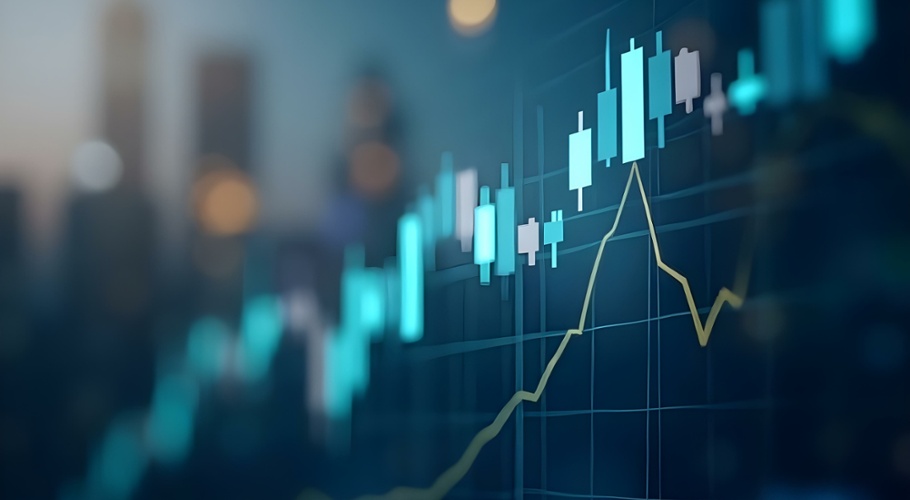Asian tigers set to earn their stripes
Asia may be poised to reverse its status as a market laggard as the result of a powerful combination of China’s reopening and other factors playing out across the region. That’s the thesis of Pruska lamthongthong, Senior Investment Director at abrdn, who argues that quality companies could be a worthwhile investment as Asia adjusts to a post-COVID world.
The case for Asian markets to shine is based on several tenets, not least of which is China’s reopening. The ability for its consumers to resume spending on goods and services, including travel, will benefit its neighbours more so than western nations. In fact, consumer confidence in the country’s economic recovery after COVID-19 is higher than its developed market peers and outstripped only by India and Indonesia.
“Excess savings in China are at a decade high and waiting to be converted into spending,” explains lamthongthong.
The spending power and preferred destinations of Chinese tourists highlights the opportunity at hand. In 2019, Chinese visitors to other countries spent a combined US$254.6 billion in 2019, but that fell to just over US$1.3 billion in 2021 as COVID made travel impossible.
Furthermore, their favoured holiday hotspots are all Asian – from Hong Kong to Thailand, Japan and Vietnam. These nations are expected to receive a real boost if China’s population regains the travel mojo that had countries around the world competing for their tourist dollar prior to COVID-19.
Beyond consumption
lamthongthong identifies supply chain diversification as another trend which will have a marked impact on the region, as global companies seek to avoid the critical shortages which have previously arisen during both COVID-19 and periods of geopolitical tension.
A concerted push to avoid future shortages of critical goods is expected to be a multi-year driver of investment across Asia, as companies build out operations across markets such as India, Indonesia and Thailand.
“We see this as a long term and sustainable driver of growth, and one of the catalysts for investment coming into Asia,” says lamthongthong.
Global capex also appears to be entering a new upwards cycle after a lacklustre 10 years and, historically, such investment is closely correlated to the performance of MSCI’s benchmark stock market indices. “That’s pretty intuitive as Asia is the factory of the world,” says lamthongthong.
Additionally, the prevalence of intra-Asian trade means the region is not economically dependent on the west and so more immune from the impact of a global recession than is commonly perceived. In fact, trade between Asian neighbours account for close to 60% of all trade within the region.
Balance sheet strength
The final factor to consider when assessing the potential for Asian markets, is the end of the profit cycle that dominated global markets for the past decade as low interest rates drove earnings per share for S&P500 stocks higher.
“We are starting to see cracks coming through recently and expect to see more cracks as a result of other changes in the operating environment,” lamthongthong says.
“US and European companies have really geared up by using cheap liquidity for share buybacks to boost shareholder returns. Asian companies have been more restrained with leverage and are therefore in better shape.
“The ability to buy back shares is going to be increasingly tough, simply because it will be more expensive. So the divergence between the earnings-per-share (EPS) growth of US companies and Asian companies has room to revert,” she says.
Valuations already look attractive in a global context and market leadership is shifting away from US growth stocks such as technology companies.
Government debt within Asia is similarly conversative relative to the debt-to-GDP ratio of western nations. The relatively low leverage is partly due to lingering memories of the 1997 financial crisis and also a result of Asian governments not providing as much fiscal stimulus during COVID-19 as their developed market peers.
Go active to reap gains
Actively managed funds are the best option for Asian investment due to the makeup of the MSCI Asia ex Japan Index, which is more than 36% weighted to China and splits another 32.17% of its holdings between Taiwan and India, argues lamthongthong.
‘Quality stocks’ form the linchpin of abrdn’s Sustainable Opportunities Fund while markets remain volatile, a principle underscored by the recent crisis that ensnared US institutions such as Silicon Valley Bank and later Swiss banking giant Credit Suisse.
abrdn’s analysis shows quality companies have been more resilient in past recessions in Asia, returning 1.38 per cent, versus the losses recorded by other popular investment strategies such as value, growth and high volume.
Quality companies are those able to grow in a sustainable manner, demonstrate a strong competitive advantage and provide earnings visibility. Those in industries with a ‘long runway’ are also desirable, not least because good assets ultimately sell for good prices, lamthongthong says.
Another critical factor of abrdn’s assessment of quality is Environmental, Social and Governance (ESG), starting with the material risks that apply across the industries in which a company operates. Its proprietary analytics generate an ESG house score, as well as measures of carbon footprinting, engagement and a climate scenario analysis.
“ESG shouldn’t be a standalone criteria in investment decisions but instead factored into every stage of the process,” says lamthongthong.
Powering India’s future
Key themes underpinning the fund’s portfolio, reflect significant trends that are transforming Asian economies, include a rising middle class, urbanisation and a related infrastructure boom, as well as digital innovation. Companies with a focus on climate change or health round out the sectors in which the fund manager is finding the best opportunities.
lamthongthong nominates Indian company Powergrid as a good example of a company which fits the criteria for inclusion in the portfolio. It manages grid networks in India that transmit about half of the technology that is used domestically. Its total 170,000 kilometres in transmission lines, would wrap around Australia’s coastline five times, demonstrating the sheer size of its operations.
“Powergrid has a clear long term structural story that ties in with the theme of going green in India,” she says.
It is developing ‘green corridors’ for the transmission of green energy that aligns the company to the greater goal of climate transitions and is likely to benefit from ambitious government infrastructure spending. The return on its core transmission business is regulated with a review every five years, which allows the company to pass through costs and remain relatively insulated from commodity-price volatility.
There’s early evidence to suggest a new cycle in Asian shares has already begun. The MSCI Asia ex Japan Index (USD) gained 0.71% in three months to February 28, versus a smaller 0.17% gain in the MSCI World Index (USD).
abrdn is a strong believer that this uptick bodes well for the Asian region and that its outperformance could continue beyond this quarter into the years ahead.

